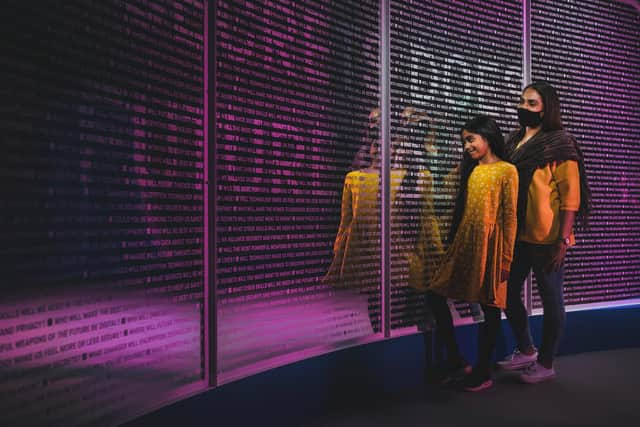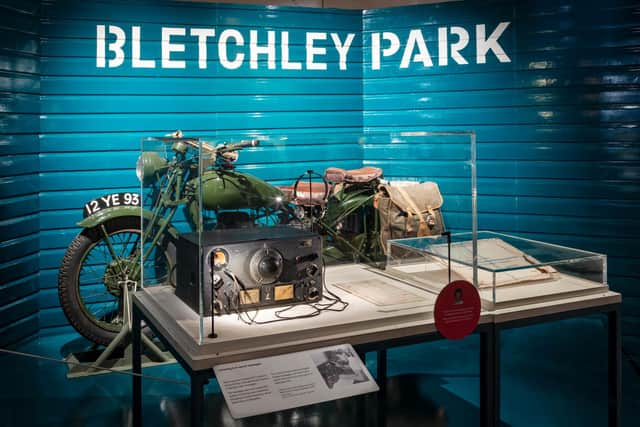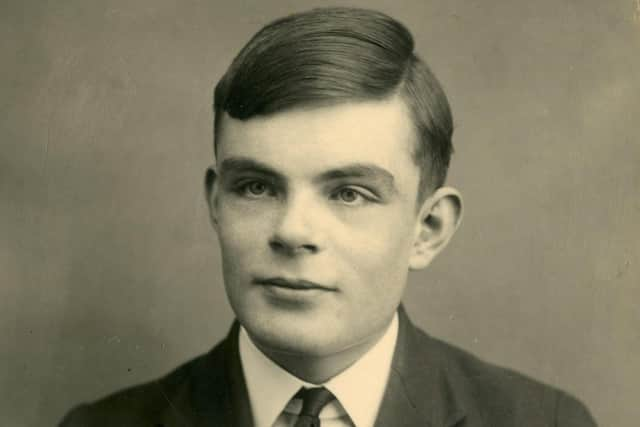Bradford museum set to host a fascinating insight into the art of spying and global surveillance over the past century
From the efforts to ward off the German offensives during the First World War to the latest espionage over cyber-space, the UK’s intelligence specialists have played an instrumental role.
And an exhibition to provide a glimpse into the world of codebreaking, cyber-security, and secret communications will be unveiled in Yorshire next month. The event, called Top Secret:
Advertisement
Hide AdAdvertisement
Hide AdFrom Ciphers to Cyber-security, has been created alongside expert advisors at GCHQ, and will be staged at the National Science and Media Museum in Bradford.


GCHQ’s director, Sir Jeremy Fleming, said: “GCHQ has been at the heart of the nation’s security for over 100 years.
“The centenary exhibition is an exploration of our past, present and future.
“Those who visit will get a glimpse into the hidden world of intelligence and learn about the brilliant people who have innovated in secret to keep the country safe. Some might even be inspired enough to join us.”
Advertisement
Hide AdAdvertisement
Hide AdBeginning their journey over a century ago by exploring how Britain protected its skies during the First World War, visitors will then delve into a collection of objects which track the remarkable work of Alan Turing and the team at Bletchley Park, who broke German cipher systems in the 1940s.


The exhibition then focuses on Cold War Britain and how intelligence agencies and police foiled one of the most successful spy rings during that time.
Visitors will be transported back to the 21st century for the challenges of maintaining digital security and how new technologies have transformed how the world communicates, bringing risks as well as opportunities.
More than 100 exhibits reveal the stories of communications intelligence from the past century, including cipher machines used in the Second World War, secure telephones of the type used by Prime Ministers, and an encryption key used by The Queen. Other exhibits also chart the work of GCHQ’s National Cyber-Security Centre to defend against cyber-attacks.
Advertisement
Hide AdAdvertisement
Hide AdA computer infected with the WannaCry ransomware which, in 2017, affected thousands of people and organisations, including the NHS, will also be on display.


Curator Toni Booth said: “The exhibition will showcase how advancements in image and film have impacted domestic spyware throughout the Cold War Era, and ultimately influenced modern technologies that have transformed how we communicate today.”
The North of England is seen as key to helping tackle the most serious threats to national security.
The Government is planning to establish a ‘cyber corridor’ in the North to promote growth in the digital, defence and technology sectors, and GCHQ opened an office in the North-West in 2019.
Advertisement
Hide AdAdvertisement
Hide AdThe intelligence service already has bases in Scarborough in North Yorkshire as well as London, Cheltenham and Bude.
The exhibition, previously staged in London and Manchester, will run from February 11 to June 5. It is free, but booking is essential. Visitors will also need to book a general admission ticket to the museum.